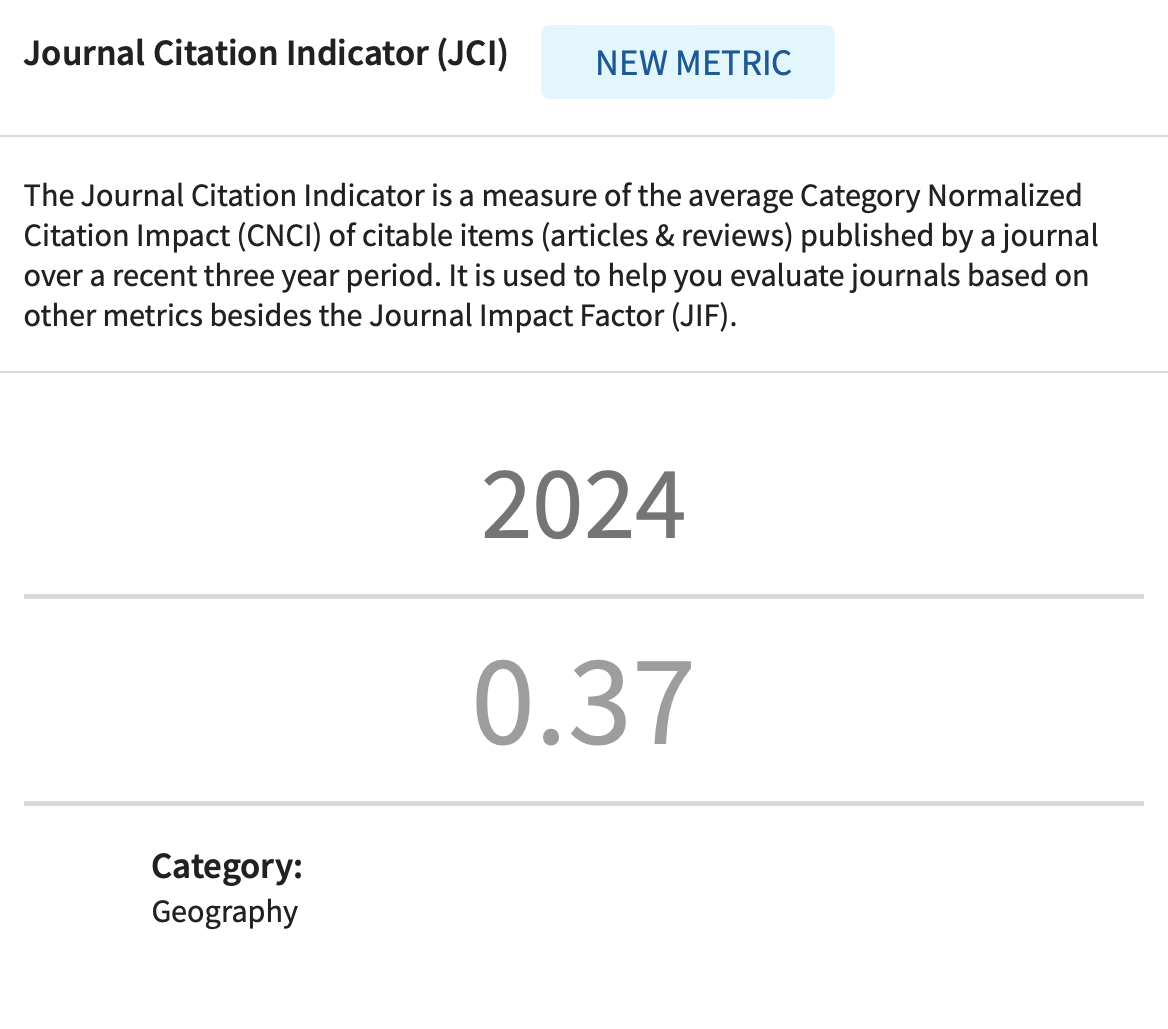FALLEN LEAVES AS A POSSIBLE DECISION TO IMPROVE SURFACE WATER BODIES’ QUALITY IN BELAYA RIVER BASIN (RUSSIA)
DOI:
https://doi.org/10.2298/IJGI241129007NKeywords:
polluted water body, crude oil, Аcer platanoides, fallen leaves, Belaya RiverAbstract
Currently, human activities significantly contribute to water pollution of natural water bodies. Pollution of water bodies with oil and petroleum products, especially in an urbanized area, is caused by the discharge of wastewater containing these products, as well as by oil leaks and emergencies. Similar pollution is typical for the water bodies in the basin of the Belaya River (Bashkortostan Republic, Russia), which is considered in this work. Bibliometric analysis by using VOSviewer revealed that pollution of water bodies is associated with crude oil pollution. For the remediation of water from crude oil, natural materials are widely used, including the sorbent from fallen leaves. Trees in cities produce a significant volume of fallen leaves every fall, which become plant waste. During the transition of the world community to a circular economy, fallen leaves should be considered as a material for obtaining a biosorbent. Five fraction sizes of Аcer platanoides were studied to determine crude oil absorption. It has been established that particles with a size from one to two millimeters have the largest sorption capacity (5.41–5.77 g/g). Fallen leaves of Аcer platanoides are capable of absorbing crude oil and can be recommended for treating polluted water from crude oil and petroleum products. The obtained proof of the ability of Аcer platanoides leaves to absorb oil with their high buoyancy can be used in further studies of oil sorption process from water and the interaction of sorbent with oil in an aqueous medium under static and dynamic conditions.
Article metrics
References
Adeniyi, A. G., & Ighalo, J. O. (2019). Biosorption of pollutants by plant leaves: An empirical review. Journal of Environmental Chemical Engineering, 7(3), Article 103100. https://doi.org/10.1016/j.jece.2019.103100
Akpomie, K. G., & Conradie, J. (2023). Batch sorption of vegetable oil from simulated oil-polluted water onto Populus nigra leaf waste. International Journal of Environmental Science and Technology, 20(5), 5377–5390. https://doi.org/10.1007/s13762-022-04328-z
Alekseeva, A. A., & Stepanova, S. V. (2019). Effect of Plasma Surface Modification of Mixed Leaf Litter on the Mechanism of Oil Film Removal from Water Bodies. Russian Journal of General Chemistry, 89(13), 2763–2768. https://doi.org/10.1134/S107036321913005X
Alhajali, O., Ali-Nizam, A., & Almostafa, R. (2022). Application of Pistacia atlantica Leaves Powder as Natural Material To Remove Nitrate and Phosphate Ions From Domestic Wastewater by Characterization, Bio-removal, and Phytotoxicity Studies. Journal of the Turkish Chemical Society Section A: Chemistry, 9(3), 759–776. https://doi.org/10.18596/jotcsa.1026262
Amirnia, S., Ray, M. B., & Margaritis, A. (2016). Copper ion removal by Acer saccharum leaves in a regenerable continuous-flow column. Chemical Engineering Journal, 287, 755–764. https://doi.org/10.1016/j.cej.2015.11.056
ASTM International. (2024). Standard Test Method for Sorbent Performance of Adsorbents for use on Crude Oil and Related Spills (ASTM-F0726-17R24). ASTM International. https://doi.org/10.1520/F0726-17
Bhattacharjee, S., & Dutta, T. (2022). An overview of oil pollution and oil-spilling incidents. In P. Das, S. Manna, & J. K. Pandey (Eds.), Advances in Oil-Water Separation – A Complete Guide for Physical, Chemical, and Biochemical Processes (pp. 3–15). Elsevier Inc. https://doi.org/10.1016/B978-0-323-89978-9.00014-8
Blasques, R. V., Camargo, J. R., Veloso, W. B., Meloni, G. N., Fernandes, F. A., Germinare, B. F., Guterres e Silva, L. R. G., de Siervo, A., Paixao, T. R. L. C., & Janegitz, B. C. (2024). Green Fabrication and Analytical Application of Disposable Carbon Electrodes Made from Fallen Tree Leaves Using a CO2 Laser. ACS Sustainable Chemistry & Engineering, 12(8), 3061–3072. https://doi.org/10.1021/acssuschemeng.3c06526
Cao, Y., Li, X., Li, Y., Guo, J., & Qi, Y. (2024). Quantification and Proxy Indicators of the Carbon Pool in Urban Tree Litterfall: A Case Study of Urban Green Spaces in Beijing. Forests, 15(1), Article 144. https://doi.org/10.3390/f15010144
Chanthavong, V., Prabhakar, M. N., Lee, D. W., & Song, J.-I. (2024). Extraction of Cellulose Microfibers From Waste Fallen Dried Leaves and Fabrication of a Degradable Composite Film for Packaging Applications. Journal of Inorganic and Organometallic Polymers and Materials, 34(4), 1861–1875. https://doi.org/10.1007/s10904-023-02928-x
Chawla, H., Singh, S. K., & Haritash, A. K. (2024). Reversing the damage: ecological restoration of polluted water bodies affected by pollutants due to anthropogenic activities. Environmental Science and Pollution Research, 31(1), 127–143. https://doi.org/10.1007/s11356-023-31295-w
de Meira, A. M., Nolasco, A. M., de Souza, E. C., de Souza, M. P., Pereira, A. K. S. P., Ucella-Filho, J. G. M., & Dias Júnior, A. F. (2024). Integrated municipal management of waste from tree pruning and removal. Urban Forestry & Urban Greening, 94, Article 128238. https://doi.org/10.1016/j.ufug.2024.128238
Fedeli, R., Celletti, S., Alexandrov, D., Nafikova, E., & Loppi, S. (2024). Biochar-mediated bioremediation: A sustainable strategy to increase Avena sativa L. tolerance to crude oil soil contamination. Environmental Science and Pollution Research, 31(40), 52774–52783. https://doi.org/10.1007/s11356-024-34732-6
Hobbie, S. E., Baker, L. A., Buyarski, C., Nidzgorski, D., & Finlay, J. C. (2014). Decomposition of tree leaf litter on pavement: implications for urban water quality. Urban Ecosystems, 17(2), 369–385. https://doi.org/10.1007/s11252-013-0329-9
Hydrochemical Institute. (2023). Surface water quality of the Russian Federation. https://gidrohim.com/node/61
Iakovleva, E., & Sillanpää, M. (2020). Novel sorbents from low-cost materials for water treatment. In M. Sillanpää (Ed.), Advanced Water Treatment: Adsorption (pp. 265–359). Elsevier Inc. https://doi.org/10.1016/B978-0-12-819216-0.00004-7
Ighalo, J. O., & Adeniyi, A. G. (2020). A mini-review of the morphological properties of biosorbents derived from plant leaves. SN Applied Sciences, 2(3), Article 509. https://doi.org/10.1007/s42452-020-2335-x
Joshi, H. K., Vishwakarma, M. C., Kumar, R., Sharma, H., Joshi, S. K., & Bhandari, N. S. (2022). Adsorption of Cd2+ from synthetic wastewater by modified leaves of Eupatorium adenophorum and Acer oblongum: thermodynamics, kinetics and equilibrium studies. Discover Water, 2(1), Article 9. https://doi.org/10.1007/s43832-022-00018-6
Malyshkina, E. S. (2020). Classification of sorbents used in technologies for purification of waste water from petroleum products. Urban Construction and Architecture, 10(3), 26–34. https://doi.org/10.17673/Vestnik.2020.03.5
Ministry of Agriculture of the Russian Federation. (2016). Normativy kachestva vody vodnyh obektov rybohozyajstvennogo znacheniya, v tom chisle normativov predelno dopustimyh koncentracij vrednyh veshchestv v vodah vodnyh obektov rybohozyajstvennogo znacheniya, prikaz N. 552 [Water quality standards for water bodies of fisheries importance, including standards for maximum permissible concentrations of harmful substances in the waters of water bodies of fisheries importance, Order № 552]. https://base.garant.ru/71586774/
Ministry of Forestry of the Republic of Bashkortostan. (2018). Lesnoj plan Respubliki Baškortostan 2019– 2028 [Forest plan of the Republic of Bashkortostan 2019–2028]. https://npa.bashkortostan.ru/22833/
Ministry of Nature Management and Ecology of the Republic of Bashkortostan. (2024). Gosudarstvennyj doklad o sostojanii prirodnyh resursov i okružajuŝej sredy Respubliki Baškortostan v 2023 godu [State report on the condition of natural resources and the environment of the Republic of Bashkortostan in 2023. https://ecology.bashkortostan.ru/upload/uf/14a/sufqis5j5kt409lhpihta87eiyjtjrfa/Gosdoklad_2024-.pdf
Mosoarca, G., Vancea, C., Popa, S., Dan, M., & Boran, S. (2023). Utilizing Novel Lignocellulosic Material from Hart’s-Tongue Fern (Asplenium scolopendrium) Leaves for Crystal Violet Adsorption: Characterization, Application, and Optimization. Polymers, 15(19), Article 3923. https://doi.org/10.3390/polym15193923
Nasyrova, E., Elizaryev, A., Aksenov, S., Baiduk, Y., Kamaeva, E., & Akhtyamov, R. (2019). Geoenvironmental assessment of urban water bodies. E3S Web of Conferences, 110, Article 02045. https://doi.org/10.1051/e3sconf/201911002045
Natural Museum. (n.d.). Description of Acer platanoides. Retrieved November 28, 2024 from https://natural-museum.ru/flora/клен-остролистный
Odunlami, O. A., Odiakaose, E. O., Owoicho, I. A., Oladimeji, T. E., & Elehinafe, F. B. (2022). Treatment of oil spills with natural sorbents: a review. International Journal of Recent Research in Physics and Chemical Sciences, 9(1), 16–25. https://doi.org/10.5281/zenodo.6586925
Oliveira, L. M. T. M., Saleem, J., Bazargan, A., Duarte, J. L. S., McKay, G., & Meili, L. (2021). Sorption as a rapidly response for oil spill accidents: a material and mechanistic approach. Journal of Hazardous Materials, 407, Article 124842. https://doi.org/10.1016/j.jhazmat.2020.124842
Osadebe, A. U., Ogugbue, C. J., & Okpokwasili, G. C. (2024). Bioremediation of crude oil polluted surface water using specialised alginate-based nanocomposite beads loaded with hydrocarbon-degrading bacteria and inorganic nutrients. Bioremediation Journal, 1–23. https://doi.org/10.1080/10889868.2024.2381022
Osman, A. I., El-Monaem, E. M. A., Elgarahy, A. M., Aniagor, C. O., Hosny, M., Farghali, M., Rashad, Е., Ejimofor, M. I., López-Maldonado, E. A., Ihara, I., Yap, P-S., Rooney, D. W., & Eltaweil, A. S. (2023). Methods to prepare biosorbents and magnetic sorbents for water treatment: a review. Environmental Chemistry Letters, 21(4), 2337–2398. https://doi.org/10.1007/s10311-023-01603-4
Ravuri, D., & Gilbert, W. (2013). Biosorption of Ni (II) from aqueous solution using Acer saccharum leaves (ASL) as a potential sorbent. International Journal of Advanced Chemistry, 2(1), 1–5. https://doi.org/10.14419/ijac.v2i1.1531
Silajcheva, M. V., Stepanova, S. V., & Shajhiev, I. G. (2015). Kinetika sorbcii ionov zheleza (II) klenovym opadom [Kinetics of sorption of iron (II) ions by maple leaf litter]. Bulletin of Kazan Technological University, 18(20), 257–259. https://elibrary.ru/download/elibrary_25036255_67178017.pdf
Stepanova, S. V., Shajmardanova, A. Sh., & Shajhiev, I. G. (2013). Opad berezy i ee himicheskie modifikaty dlya udaleniya nefti [Birch litter and its chemical modifiers for oil removal]. Bulletin of Kazan Technological University, 16(14), 215–217. https://cyberleninka.ru/article/n/opad-berezy-i-ee-himicheskie-modifikaty-dlya-udaleniya-nefti
Subhashish, D., Naga, S. A. K., Veerendra, G. T. N., & Arunchaitanya, S. (2022). The removal of iron from synthetic water by the applications of plants leaf biosorbents. Cleaner Engineering and Technology, 9, Article 100530. https://doi.org/10.1016/j.clet.2022.100530
Tarakanov, D. A., Elizariev, A. N., & Khasanov, I. A. (2023). Ocenka effektivnosti stohasticheskih modelej dlya prognozirovaniya gidrologicheskih harakteristik reki Belaya [Assessment of the effectiveness of stochastic models for forecasting hydrological characteristics of the river Belaya]. The North Caucasus Ecological Herald, 19(4), 23–29. http://ecokavkaz.ru/media/docs/2023/4/19-4-9.pdf
Tran, V. S., Ngo, H. H., Guo, W., Zhang, J., Liang, S., Ton-That, C., & Zhang, X. (2015). Typical low cost biosorbents for adsorptive removal of specific organic pollutants from water. Bioresource Technology, 182, 353–363. https://doi.org/10.1016/j.biortech.2015.02.003
Ukhurebor, K. E., Hossain, I., Pal, K., Jokthan, G., Osang, F., Ebrima, F., & Katal, D. (2024). Applications and Contemporary Issues with Adsorption for Water Monitoring and Remediation: A Facile Review. Topics in Catalysis, 67(1), 140–155. https://doi.org/10.1007/s11244-023-01817-4
Vargas Soplín, A. de J., Meyer-Aurich, A., Prochnow, A., & Kreidenweis, U. (2024). Alternative uses for urban autumn tree leaves: a case study in profitability and greenhouse gas emissions for the city of Berlin. Journal of Cleaner Production, 470, Article 143290. https://doi.org/10.1016/j.jclepro.2024.143290
Vishwakarma, M. C., Joshi, H. K., Joshi, S. K., & Bhandari, N. S. (2022). Biosorption Study of Pb(II) Ions onto Treated Eupatorium adinoforum (AEA) and Acer Oblongum (AAO): Thermodynamic and Equilibrium Studies. Applied Science and Engineering Journal for Advanced Research, 1(3), 1–13. https://doi.org/10.54741/asejar.1.3.1
Wu, K., Cui, K., Huang, Y., Yu, K., Chen, X., Li, C. X., & Chen, Y. (2024). Degree of human activity exert differentiated influence on conventional and emerging pollutants in drinking water source. Environmental Science and Pollution Research, 31(5), 7214–7226. https://doi.org/10.1007/s11356-023-31440-5
Yaparov, I. M. (Ed.). (2005). Atlas respubliki Baškortostan [Atlas of the Bashkortostan Republic]. Roskartografiya.
Zamparas, M., Tzivras, D., Dracopoulos, V., & Ioannides, T. (2020). Application of Sorbents for Oil Spill Cleanup Focusing on Natural-Based Modified Materials: A Review. Molecules, 25(19), Article 4522. https://doi.org/10.3390/molecules25194522
Downloads
Published
How to Cite
Issue
Section
License
Copyright (c) 2025 Journal of the Geographical Institute “Jovan Cvijić” SASA

This work is licensed under a Creative Commons Attribution 4.0 International License.











